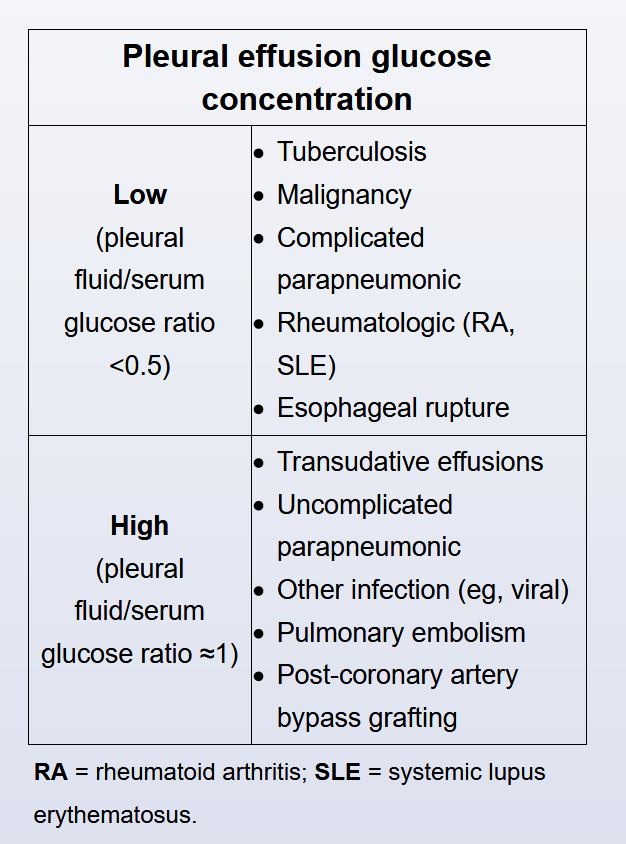pleural fluid with very high LDH and low glucose are found in either empyema or rheumatoid pleurisy
- related: pleural effusion, rheumatoid arthritis
- tags: #permanent
Pleural fluid with low pH, very low glucose levels (< 30 mg/dL), and extremely high LDH levels (>1000 U/L) are typically found in empyema or rheumatoid pleurisy. Rheumatoid effusions are often yellow-greenish in appearance and have cell counts <5000/µL with predominantly lymphocytes. In contrast, fluid in empyema appears purulent with a high cell count (>50,000/µL) and neutrophilic predominance. Rheumatoid effusions are typically found in 5% of patients with RA.

Links to this note
- pleural effusion
- transudative vs exudative pleural fluid causes
- Transudative fluid are normally caused by increased hydrostatic or decreased oncotic pressure. This usually happens in heart failure, cirrhosis, or nephrotic syndrome. Exudative fluid are caused by inflammation of the pleural surface and can be caused by infection (simple effusion, uncomplicated, complicated parapneumonic effusion, empyema), TB (pleural effusion in TB are exudative, lymphocyte predominant, have low glucose, and elevated adenosine deaminase), pancreatitis (elevated amylase in pleural effusion suggests esophageal rupture or pancreatitis), PE, or connective tissue disease (pleural fluid with very high LDH and low glucose are found in either empyema or rheumatoid pleurisy).